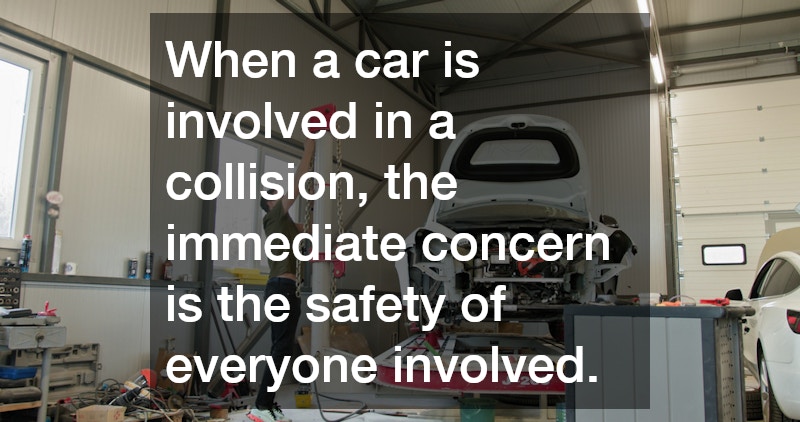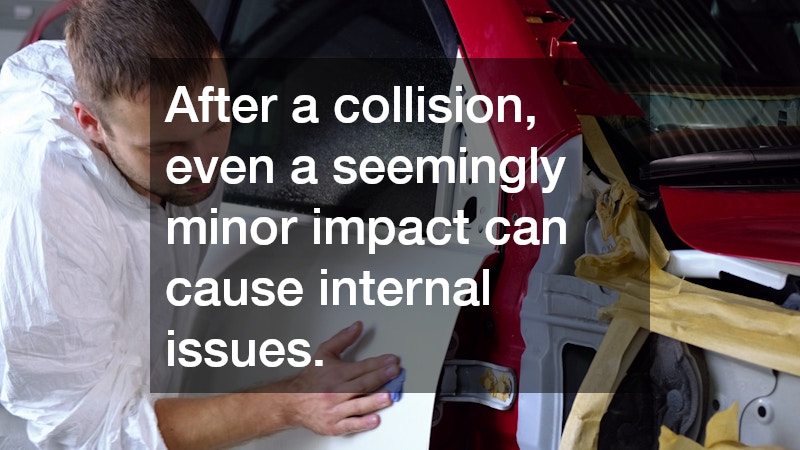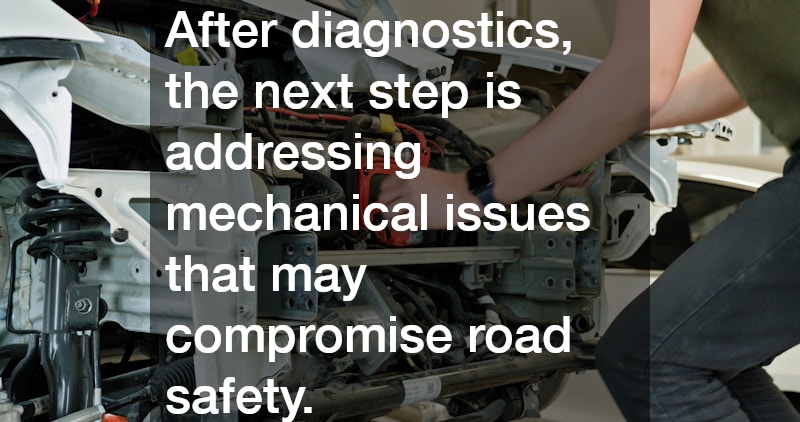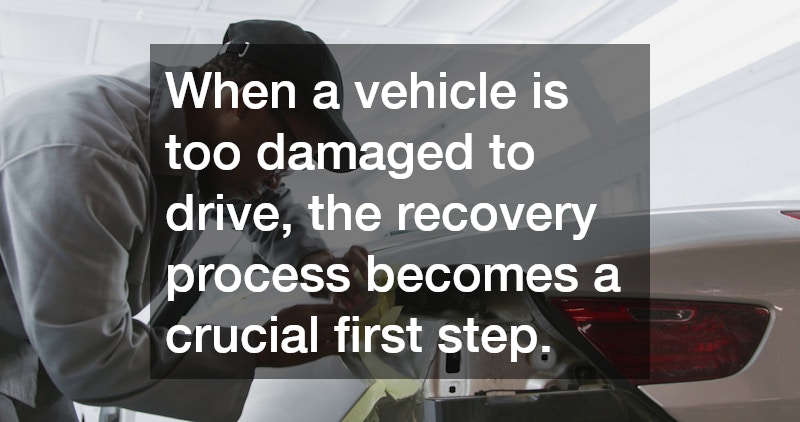
When a car is involved in a collision, the immediate concern is the safety of everyone involved. Once the dust settles, vehicle owners must face the challenge of restoring their car’s performance and appearance. Beyond the visible dents and scratches, structural integrity and mechanical reliability are often compromised in ways not immediately apparent. Restoring a vehicle after an accident requires more than just cosmetic repairs—it demands technical precision, safety testing, and professional craftsmanship to ensure that the car performs as well as it did before the incident.
A comprehensive collision repair process combines skilled technicians, advanced technology, and systematic inspections. The goal is not just to fix what’s broken but to restore safety, comfort, and confidence for the driver.

Assessing the Damage Beyond the Surface
After a collision, even a seemingly minor impact can cause internal issues. Proper evaluation is essential before any work begins. Experienced technicians use digital tools and manual inspections to identify both visible and hidden damage.
A professional auto shop typically follows a detailed diagnostic checklist to determine which systems need repair or replacement. Structural components, wiring, and suspension parts are carefully inspected, as misalignment in these areas can compromise safety.
Key evaluation steps include:
-
Structural integrity check: Ensures that the frame and subframe haven’t been bent or twisted.
-
Suspension and alignment test: Detects issues that could cause uneven tire wear or handling problems.
-
Safety systems review: Evaluates airbags, sensors, and braking components for proper function.
In some cases, what appears to be a minor scrape could actually mask significant damage. Thorough diagnostics ensure that repairs address the full scope of the problem rather than just surface imperfections.
Prioritizing Safety Through Comprehensive Mechanical Repair
After diagnostics, the next step is addressing mechanical issues that may compromise road safety. Many collision repairs involve replacing or recalibrating critical parts.
A trusted auto body shop often partners with certified mechanics to handle complex mechanical work, such as steering components, suspension systems, and engine mounts. One of the most vital systems to check is the brakes. Damage from even a small collision can affect how a car stops and handles under pressure.
Professional technicians at an auto brake repair shop understand that braking systems are essential to overall safety. They inspect pads, rotors, brake lines, and sensors to confirm everything meets manufacturer specifications. If necessary, parts are replaced using OEM-approved components to maintain factory standards.
Mechanical safety checklist:
-
Recalibrate electronic systems like ABS and traction control.
-
Replace damaged brake components immediately.
-
Verify that steering and alignment respond accurately.
-
Perform post-repair road tests to ensure full functionality.
Prioritizing these systems ensures that the vehicle not only looks good but performs reliably under real-world conditions.

Repairing Structural Integrity for Long-Term Reliability
When a vehicle’s frame or body panels are damaged, restoring its structure becomes a top priority. Even small misalignments can affect performance, tire wear, and crash protection. Advanced facilities such as a certified auto body center use computerized frame-straightening systems to measure and restore the chassis with millimeter precision.
Technicians rely on factory repair manuals and data from the manufacturer to replicate original dimensions. The frame is measured, pulled, and reinforced as needed to ensure safety standards are met. Once the structure is secure, the body panels can be realigned for a perfect fit.
Structural restoration steps:
-
Measure frame alignment using laser-guided systems.
-
Secure the vehicle on a hydraulic straightening platform.
-
Re-weld or replace bent sections with high-strength materials.
-
Inspect joints and mounting points for integrity.
Proper structural repair ensures that safety systems, like airbags and crumple zones, perform correctly in future incidents. Without this precision, even a beautifully painted car could hide critical safety flaws.
Restoring the Exterior: From Dents to a Flawless Finish
Once the vehicle’s structure and mechanical systems are sound, attention turns to aesthetics. Exterior restoration goes beyond simple paint jobs—it involves blending, color-matching, and meticulous craftsmanship.
Professionals in local auto body repair services use high-quality paints, clear coats, and computerized color-matching technology to achieve seamless finishes. Whether it’s a full repaint or localized touch-up, every detail matters.
Exterior restoration techniques include:
-
Paintless dent repair (PDR): Removes minor dents without affecting the paint layer.
-
Panel replacement: Restores sections too damaged for repair.
-
Blending and refinishing: Ensures new paint matches the existing surface perfectly.
High-end facilities use climate-controlled spray booths that eliminate dust and moisture, resulting in a flawless finish. Once painted, the vehicle is buffed and polished for showroom-quality shine. This step not only enhances appearance but also provides long-term protection against rust and corrosion.
Replacing Damaged Glass for Safety and Visibility
A cracked or shattered windshield can weaken the entire vehicle’s structural strength. Modern windshields are integral to airbag deployment and roof support, making replacement a matter of safety, not aesthetics.
Skilled technicians specializing in car windshield replacement use manufacturer-approved glass and adhesives to ensure the windshield functions as designed. Proper installation restores visibility and structural stability, preventing leaks and glare distortions.
Glass replacement essentials:
-
Always choose laminated safety glass that meets federal standards.
-
Verify that sensors for rain detection and lane assist are recalibrated.
-
Avoid driving for 24 hours after replacement to allow adhesives to cure.
Windshield work requires precision. A poorly installed windshield can compromise safety in future collisions or rollovers. Choosing a certified shop ensures that both safety and clarity are fully restored.
Handling Transmission and Performance Repairs
Collisions can cause damage to drivetrains and transmissions, especially in rear- or front-impact crashes. Even small vibrations after an accident could indicate internal issues. That’s why skilled technicians often recommend a manual transmission repair if shifting or acceleration feels off.
Restoring a vehicle’s performance requires specialized knowledge. Transmission components must be inspected for leaks, worn gears, and damaged seals. Early detection prevents costly replacements down the line.
Performance restoration checklist:
-
Inspect for fluid leaks and worn mounts.
-
Test gear shifting for smoothness.
-
Replace damaged clutch assemblies when necessary.
-
Conduct a post-repair performance test.
Addressing transmission and powertrain issues ensures that repaired vehicles don’t just look new—they perform at peak efficiency once back on the road.
Managing the Repair Process and Communication
Transparency and communication are vital to a smooth repair experience. A well-run auto shop provides written estimates, timelines, and progress updates throughout the process. This helps customers understand each repair phase and prevents unexpected costs.
Best practices for managing repairs:
-
Request a detailed repair plan and parts list.
-
Confirm whether new, OEM, or refurbished parts will be used.
-
Ask for before-and-after photos to document work quality.
-
Keep copies of all paperwork for insurance and resale purposes.
Open communication also extends to post-repair warranties. Reputable facilities guarantee both workmanship and parts for a specified period, ensuring peace of mind for car owners.
The Role of Professional Car Recovery After Accidents
When a vehicle is too damaged to drive, the recovery process becomes a crucial first step. Professional car recovery services safely transport vehicles from accident scenes to repair facilities, minimizing additional damage.
Trained operators use flatbed trucks, wheel lifts, or towing systems designed for modern vehicles equipped with sensitive sensors and low ground clearance. Safe recovery prevents frame bending and transmission strain.
Tips for safe recovery and transport:
-
Always choose licensed, insured recovery providers.
-
Ensure vehicles are secured with wheel straps, not chains.
-
Notify your insurance company immediately to streamline claims.
Efficient recovery services ensure that the repair process begins quickly and safely, reducing downtime and complications for vehicle owners.
Coordinating With Legal and Insurance Professionals
After a collision, documentation and insurance claims can become overwhelming. In some cases, consulting a car accident attorney helps vehicle owners navigate complex legal or liability issues. Attorneys assist in ensuring that insurance companies provide fair compensation for repairs, replacement vehicles, or injuries sustained.
A well-documented repair process—complete with receipts, photographs, and inspection reports—supports both insurance and legal claims.
Legal coordination checklist:
-
Gather all estimates and invoices from repair shops.
-
Photograph the vehicle before and after repairs.
-
Maintain communication between your attorney and the repair center.
Working with professionals simplifies the process, ensuring that financial and legal aspects are managed efficiently while the vehicle restoration proceeds smoothly.

The Importance of Choosing Certified Repair Professionals
Not all repair shops offer the same level of expertise. Certified technicians undergo rigorous training and use advanced equipment to meet industry and manufacturer standards. Choosing a facility accredited by I-CAR or ASE ensures that all repairs—from cosmetic work to car repair and recalibration—meet safety benchmarks.
Why certification matters:
-
Guarantees the use of approved materials and methods.
-
Protects warranties by adhering to manufacturer specifications.
-
Ensures compliance with safety and environmental regulations.
Vehicle owners should look for transparent pricing, verifiable credentials, and positive customer reviews before committing to a shop. Investing in professional craftsmanship ensures a vehicle’s safety, longevity, and resale value.
Final Detailing and Quality Assurance
Before a repaired vehicle is returned to its owner, a comprehensive inspection ensures everything functions correctly. The quality assurance team checks lights, alignment, and mechanical performance, confirming that repairs meet or exceed industry standards.
This final inspection phase also includes cosmetic detailing. Paint surfaces are polished, interiors are cleaned, and all replaced components are checked for fit and finish. Some facilities even include post-service care packages, reminding customers when to schedule future inspections.
The result is a vehicle that feels new again—safe, reliable, and visually appealing.
Supporting Long-Term Vehicle Health
Even after professional repairs, preventive maintenance plays a key role in preserving a vehicle’s value. Regular inspections, fluid checks, and timely servicing reduce wear and prevent future breakdowns.
Drivers should maintain open communication with their repair facility, returning for follow-ups if unusual noises, leaks, or performance changes occur. Keeping up with scheduled maintenance ensures that the vehicle remains safe and efficient long after the collision repair.
Post-repair maintenance tips:
-
Schedule follow-up inspections every six months.
-
Rotate tires and check wheel alignment regularly.
-
Keep detailed records for resale or warranty purposes.
Proactive care helps extend the life of a repaired vehicle, ensuring continued safety on the road.
The Lasting Value of Expert Restoration
A well-executed collision repair does more than restore a car’s appearance—it renews safety, confidence, and functionality. From mechanical precision to flawless finishes, each step of the process contributes to long-term performance and owner satisfaction.
Drivers who choose certified, transparent, and customer-focused repair facilities can trust that their vehicles are not only visually restored but structurally and mechanically sound. Proper restoration is an investment in peace of mind, ensuring that every journey forward begins with safety and quality at its core.
Beyond immediate repairs, professional auto body shops provide a foundation for long-term vehicle reliability. By addressing both cosmetic and mechanical issues with precision, these facilities help prevent future complications that could arise from unnoticed damage. A car that has undergone thorough inspection and repair is less likely to suffer from hidden alignment issues, brake problems, or compromised structural integrity. This proactive approach minimizes the risk of accidents or costly repairs in the future, offering drivers a sense of security and confidence behind the wheel.
Choosing a reputable repair shop also contributes to a vehicle’s resale value. Cars that are restored using manufacturer-approved parts, accurate frame measurements, and high-quality finishes retain their worth better than those repaired in uncertified or inexperienced facilities. For drivers considering selling or trading in their vehicle, documented repairs and professional workmanship serve as verifiable proof of care, reassuring potential buyers of the vehicle’s safety and condition.
Furthermore, customer-focused shops often guide ongoing maintenance and post-repair care. This includes tips on preserving paint finishes, monitoring mechanical systems, and scheduling regular inspections. By following these recommendations, drivers extend the life of their vehicle while maintaining optimal performance and safety.
Ultimately, selecting a certified auto body center goes beyond simply fixing what is broken—it reflects a commitment to safety, longevity, and overall vehicle health. Drivers who invest in quality repairs can enjoy not only aesthetic improvements but also peace of mind, knowing their vehicle meets rigorous safety standards and is ready to perform reliably in any situation. By partnering with skilled professionals, car owners ensure that their vehicles remain both beautiful and dependable for years to come, transforming the aftermath of an accident into a lasting opportunity for care, protection, and confidence.

